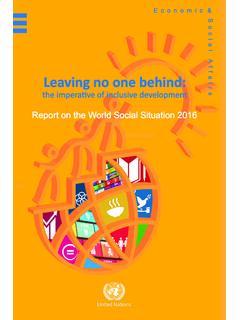Transcription of The Communicative Participation Item Bank – General Short …
1 The Communicative Participation Item bank General Short Form Instructions: The following questions describe a variety of situations in which you might need to speak to others. For each question, please mark how much your condition interferes with your Participation in that situation. By condition we mean ALL issues that may affect how you communicate in these situations including speech conditions, any other health conditions, or features of the environment. If your speech varies, think about an AVERAGE day for your speech not your best or your worst days. Not at all (3) A little (2) Quite a bit (1) Very much (0) 1. Does your condition interfere ..talking with people you know? 2. Does your condition interfere ..communicating when you need to say something quickly? 3. Does your condition interfere ..talking with people you do NOT know?
2 4. Does your condition interfere ..communicating when you are out in your community ( errands; appointments)? 5. Does your condition interfere ..asking questions in a conversation? 6. Does your condition interfere ..communicating in a small group of people? 7. Does your condition interfere ..having a long conversation with someone you know about a book, movie, show or sports event? 8. Does your condition interfere .. giving someone DETAILED information? 9. Does your condition interfere ..getting your turn in a fast-moving conversation? 10. Does your condition interfere ..trying to persuade a friend or family member to see a different point of view? Scoring guide for the CPIB General Short Form To score the Short form, add the scores for the ten items to obtain a summary score (Not at all = 3; A little = 2; Quite a bit = 1; Very much = 0).
3 The summary score will range from 0 30. High scores are more favorable, meaning that high scores indicate less interference in Participation . Using the table below, the summary scores can be converted to IRT theta values (logit scale). On the logit scale, scores generally range from to + with 0 logits representing the mean for the calibration sample. Again, high scores are preferable. The table also includes a conversion to standard T scores (mean = 50; standard deviation = 10). VERY IMPORTANT: This score translation table is ONLY valid for the 10 item Short form presented in this manuscript. Remember that in IRT, the person score is based on the parameters of the individual items and on how the person answers the items. This scoring table has been generated using the item parameters for the ten items in this Short form, and these parameters would differ for different items.
4 A new score translation table must be created for any other combination of items. CPIB 10-Item General Short Form Scoring Table Summary Theta T score Summary Theta T score 0 16 1 17 2 18 3 19 4 20 5 21 6 22 7 23 8 24 9 25 10 26 11 27 12 28 13 29 14 30 15 Baylor, C., Yorkston, K., Eadie, T., Kim, J., Chung, H., & Amtmann, D. (2013). The Communicative Participation Item bank (CPIB): Item bank calibration and development of a disorder-generic Short form. Journal of Speech Language and Hearing Research, 56, 1190-1208. 10/28/20151 Improving Communicative Participation for people with motor speech (and other) disorders: Is this something different?Carolyn Baylor, PhD, CCC SLPU niversity of WashingtonANCDSN ovember 11, of WA Core TeamKathy YorkstonDeanna BrittonDagmar AmtmannTanya EadieAphasia ProjectUW Aphasia LabDiane KendallMegan OelkeSarah WallaceEileen HunsakerCatherine OffNZ Parkinson s ProjectMegan McAuliffeStudent ProjectsJanaki TorrenceHelen MachChristina RunneJosef MogharrebanCaroline UmedaCornetta MosleyHearing Loss ProjectsKelly Tremblay (and team)Christi Miller (and team).
5 And more thanks NIH NIDCD 1R03DC010044 Baylor (PI) R01 DC012510 Baylor (PI) American Speech Language Hearing Foundation Clinical Research Grant Baylor (PI) National Cancer Institute 1R03CA132525 Eadie (PI) 1R01CA177635 Eadie (PI) NIH PROMIS Amtmann (PI) National Center for Medical Rehabilitation Research Yorkston (PI) University of Washington Dept. of Rehabilitation Medicine ANCDS Meeting RegistrationToday s Questions Is Participation something if so, does it matter? What do we mean by Participation focused intervention and should we do it? Is there a case for a cross disorder approach? What is the missing link to maximize Communicative Participation ? world Health Organization sInternational Classification of Functioning, disability , and Health (ICF) Participation :Taking part in life situations (WHO, 2001) Communicative Participation : Taking part in life situations in which information or ideas are exchanged between people (Eadie et al.)
6 , 2006)(Kagan et al., 2007)Aphasia Framework for Outcomes Measurement (A-FROM)10/28/20152 Question 1: Is Participation something if so, does it matter? Survey of SLP s views on Participation focused intervention (n = 66 SLPs) We asked about Participation . SLPs answered: I think it is very important to incorporate functional, Participation focused tasks in treatment. [A33] QOL is a critical outcome following any initial evaluation focuses on the patient's lifestyle and activities of importance to them .. [L12] Support from family also allows for increased carryover outside of the brief 45 60 minute [A21](Torrence et al., submitted)Finding the balance for treatment targets and outcomes enough to capture meaningful information about experiencesSpecific enough to capture what we can changeFunctionalAbility to perform ADL s*Too narrow?
7 GeneralizationAbility demonstrated in real-life settingsToo narrow?H-RQOLM ultidimensional well-being (physical, social, emotional)*Too broad?Other Options? Participation ?*Cella et al.; National Quality Forum Expert PanelExploring Communicative Participation with theCommunicative Participation Item bank (CPIB) Targets community dwelling adults Addresses verbal communication variety of situations Developed with Item Response Theory (IRT) with goal of computerized adaptive testing Developed to be valid across communication disorders Spasmodic dysphonia Multiple sclerosis Parkinson s disease ALS Head and neck cancer Aphasia(Baylor et al., JSLHR, 2013)Example CPIB ItemDoes your condition interfere having a conversation while riding in acar?___ Not at all___ A little___ Quite a bit___ Very muchFull item bank : 46 items; Short form: 10 items10/28/20153 Example CPIB ItemDoes your condition interfere getting your turn in a fast moving conversation?
8 ___ Not at all___ A little___ Quite a bit___ Very muchExample CPIB ItemDoes your condition interfere to persuade a friend or family member to see a different point of view?___ Not at all___ A little___ Quite a bit___ Very muchIs Communicative Participation the same with CPIBP arkinson s diseaseSelf reported speech sclerosisSelf reported speech reported speech and neck cancerSelf reported speech Aphasia (n)Comparison MeasureCorrelation with CPIBPD (378)PROMIS Social Roles ability 8 .573MS (216)PROMIS Social Roles ability Social Roles and relationships satisfaction (110)ASHA Quality of Communication Life Quality of Communication Life Overall QOL Dysphonia (208)Voice Handicap Index (VHI) .678 Head and Neck Cancer (195)Voice Handicap Index (VHI) .790Is Communicative Participation the same Perhaps be thoughtful and cautious about using terms interchangeably Work towards better understanding of the similarities and differences in lived experience constructs and the role of each in assessment and intervention Include elements in treatment and assessment that go beyond skills / ability to look at fulfillment / satisfaction with communication in real life Keep elements focused enough that we can influence change in treatment programsQuestion 1: Is Participation something if so, does it matter?
9 2: What do we mean by Participation focused intervention? A broadening and refocusing of clinical practice and research on the consequences of aphasia It focuses on re engagement in life Residual skill is thus seen as only one of many requisites (Life Participation Approach to Aphasia)(Chapey et al., 2000)10/28/20154Is it part of this picture?Patient Centered CarePatient Centered CareShared decision makingShared decision makingValue driven CareValue driven CareParticipation focused interventionParticipation focused interventionDoes it encompass anything that Ability Accessibility Ease Comfort Confidence Success Satisfaction to communicate in life rolesWe can help clients be satisfied with Communicative Participation when we help them what is personally meaningfulEasyMake connectionsMake connectionsComparison Comparison with pastConfidentPreferences; Preferences; prioritiescommunicationThink about communicationQualitative Interviews8 adults with MSYorkston, 2007 Achieve FunctionClients want therapy to help them with real I m sitting in a job thinking should I really be doing this?
10 I would have liked some sort of guidance. And I don t know if just going in and reading five sentences I m thinking you don t know what I m going through. You re not close to what I m going through. I can read, a puppy bit the tape or whatever but that s not it. (Female; SD)Female with spasmodic dysphonia questioning career in teachingWhen I first was meeting with wanted to make sure they understood me, before they told me what to wanted to make sure they understood what my situation was. Maybe they knew more about my condition than I did. I didn t care about that. I wanted them to understand my world , what I was being asked to do. Female with dysarthria due to CVAAnd I think it s always good to give the person a chance to express what is on their mind as far as the therapy itself. Ask them, What do you expect? What do you want? What are you afraid that you can t have?


